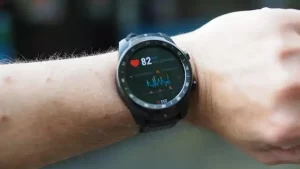Second-generation sequencing: NGS (Next-generation sequencing)
- Statins Lower Blood Lipids: How Long is a Course?
- Warning: Smartwatch Blood Sugar Measurement Deemed Dangerous
- Mifepristone: A Safe and Effective Abortion Option Amidst Controversy
- Asbestos Detected in Buildings Damaged in Ukraine: Analyzed by Japanese Company
- New Ocrevus Subcutaneous Injection Therapy Shows Promising Results in Multiple Sclerosis Treatmen
- Dutch Man Infected with COVID-19 for 613 Days Dies: Accumulating Over 50 Virus Mutations
Second-generation sequencing: NGS (Next-generation sequencing)
- Red Yeast Rice Scare Grips Japan: Over 114 Hospitalized and 5 Deaths
- Long COVID Brain Fog: Blood-Brain Barrier Damage and Persistent Inflammation
- FDA has mandated a top-level black box warning for all marketed CAR-T therapies
- Can people with high blood pressure eat peanuts?
- What is the difference between dopamine and dobutamine?
- What is the difference between Atorvastatin and Rosuvastatin?
- How long can the patient live after heart stent surgery?
Second-generation sequencing: NGS (Next-generation sequencing). Regarding high-throughput sequencing, although not. But the specific basic process can still be understood.
The current second generation. Mainly from Illumina. There is an official introduction video of illunima sequencing in the article, which is very detailed. It is recommended that those who do not understand sequencing can take a look.
The establishment of this official account aims to learn and promote the knowledge of third-generation sequencing, and to explore the analysis methods of third-generation sequencing data. In addition, share the pits you have stepped on in sequencing data analysis, and look forward to growing with you.
Preface
Some friends leave a message, sorting out some entry-level science related to sequencing. So, some time ago, we introduced the first-generation sequencing, the Sanger sequencing method.
Now let’s continue to introduce second-generation sequencing, and compare the advantages and disadvantages of second-generation sequencing and first-generation sequencing.
Introduction:
Second-generation sequencing, also known as Next-generation sequencing (NGS). To put it simply, second-generation sequencing is a short-read sequencing that relies on PCR library construction and fluorescence signal reading with a laser probe. Currently the most common platforms include Illumina and BGI (BGI), so in this article we mainly introduce the sequencing principles of these two platforms. At the same time, based on the second-generation 10X linked-read sequencing, it is an improvement on the second-generation technology, so it will be explained briefly.
1. Illumina: Sequencing by Synthesis
The principle is based on PCR. When different fluorescently labeled dNTPs (distinguish ATGC) and enzymes are added to Flowcell, the sub-strands are synthesized from the primer. However, the presence of an azide group at the 3’end of dNTP hinders the extension of the daughter chain, which makes only one base measured per cycle. After synthesizing a base, Flowcell is poured into liquid to wash off excess dNTPs and enzymes, and uses a microscope’s laser to scan the characteristic fluorescence signal.
The whole process includes sample preparation (Sample Prep), clustering (Cluster generation), sequencing (Sequencing) and other steps, the specific method of each step is not much to say, you can watch the video to get an idea.

Video material 1: Principle video of Illumina sequencing while synthesizing
2. BGI: combined probe anchor polymerization technology (cPAS) and improved DNA nanosphere (DNB) core sequencing technology
The single-stranded DNA will be wound into a nanosphere, and the nanospheres can be automatically attached to the chip with neat fixed points without stacking on each other (ie array technology), and then sequenced using the combined probe anchor connection method.
The entire process includes sample preparation (formation of end-repaired DNA fragments), fragment amplification (addition of adaptor sequences, formation of single-stranded DNA, looping, rolling

Video material 2: BGI cPAS-DNB sequencing principle video
https://youtu.be/v_nS51DRWg8
3. Comparison of Illumina and BGI

Comparison of BGISEQ500 and Illumina NEXTSEQ500[2]
4. Comparison of second-generation sequencing technology and first-generation sequencing technology
First generation: high accuracy (~0.1%ER), longer read length (~1kb), low throughput, and expensive.
Second generation: higher accuracy (1~1.5% ER), longer read length (150~600bp), high throughput, and low price.
5. UPDATED 2ND SEQUENCING: 10X GENOMICS LINKED READS
10X is to improve the library construction process, add Barcode to the same HMW DNA template and divide it into different droplets. The DNA molecules in each droplet are sequenced after being interrupted, and then assembled, so that small fragments can be analyzed by second-generation sequencing technology. After sequencing, it forms linked reads. See Nat Biotechnol. 2016 March; 34(3): 303-311. [3]

10X linked-read sequencing technology
6. Shortcomings of second-generation sequencing
(1) Fragment length: Because it is based on PCR, as the PCR reaction progresses, sequencing errors continue to accumulate, which is also the reason that limits the detection of long fragments by second-generation sequencing. 10X linked-read sequencing has the advantage of using short fragments to form long fragments, but it also has the disadvantage of the entire second-generation sequencing, that is, GC preference.
(2) The instrument is expensive: fluorescently labeled nucleotides can be used to determine the type of base by detecting the fluorescent signal, and the accuracy rate is also high. However, the detection of fluorescent signals relies on optical components, which greatly increases the cost of the instrument. This is also the reason why the cost of Nanopore sequencing technology instruments is relatively low (no light signals are detected, electrical signals are detected).
(sourceinternet, reference only)
Disclaimer of medicaltrend.org



